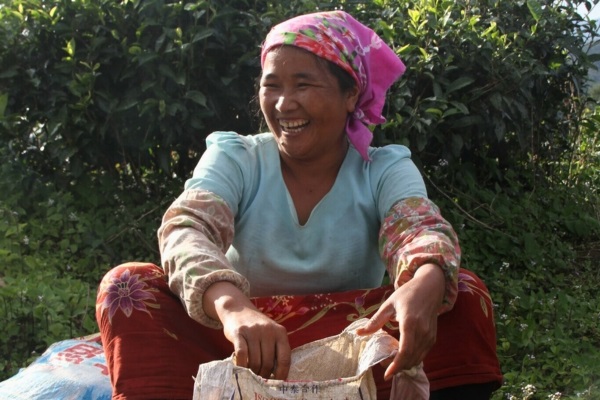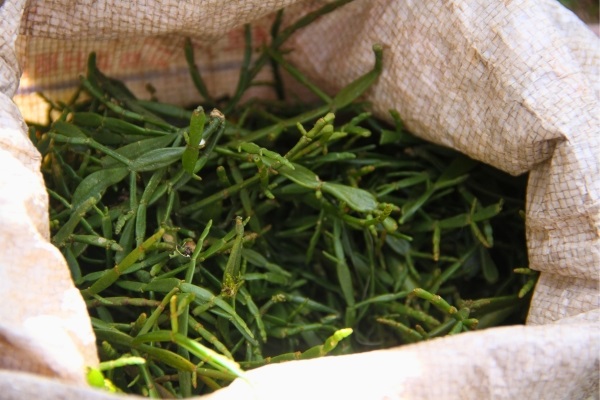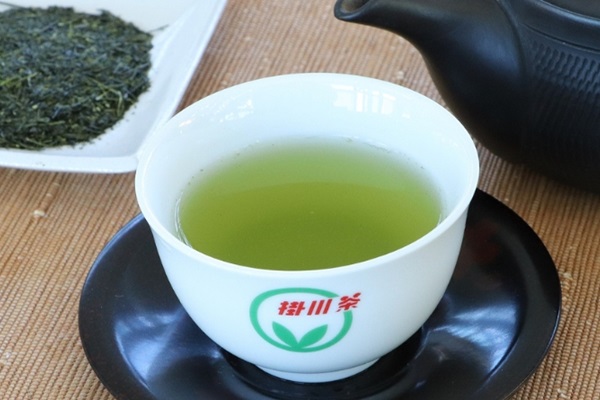Pu’er Traditional Tea Agrosystem, China
GIAHS since 2012

©FAO/Mary Jane dela Cruz
The Pu'er Tea Agroecosystem is the world's largest area of tea forest plantations established by village ancestors thousands of years ago.
Yunnan province (China) is considered the world's provenance of tea trees. Located at the starting point of the Ancient Tea-Horse Route, it is an important node in tea culture dissemination. This province contains the largest area of wild tea tree communities and ancient tea plantations with a predominant amount of ancient tea trees.
Pu'er Tea Agriculture System is rich in bio- and cultural diversity and is composed of old wild tea tree populations, ancient transitive tea plantations and ancient cultivated tea plantations. Centred on tea culture, the Pu'er Tea Agrosystem holds a complete vertical evolution of ancient magnolia and tea trees as it relies on the traditional methods of Blang, Dai, Hani and other minorities.
Global importance
Yunnan Province of China is the world’s provenance of tea trees. It’s also the province that boasts the largest area of wild tea tree communities and ancient tea plantations with the largest amount of old tea trees and wild tea trees. Pu’er Tea Agriculture System is centered on Pu’er tea and tea culture. People in this area have started collecting and use tea leaves for more than 1000 years.
This system has typical tea forests and modern tableland tea plantations, rich biodiversity and agricultural diversity, sound landscape features and a complete traditional knowledge system of the ethnic minorities which have to be preserved from modern threat as population growth, irrational harvesting and over-exploitation.
Food and livelihood security
Mountain farming is the main livelihood for locals. The main grain crops in the region are: paddy rice, upland rice, corn, wheat, winter buckwheat, beans, tuberous crops and oil crops, most of which have a long cultivation history. These products are not only food for locals, but also their livelihood foundation. The farmers sell rough tea to factories, which make the leaves into various products and sell them worldwide.
In 2009, Agriculture dominates the economy thanks to agriculture power of Pu’er. Its farmland area was 41,220ha, with a grain yield of 182,231 tons, the highest in the city. But given the large population, its per capita grain yield was relatively low, only 334kg.
Biodiversity and ecosystem functions
Up till now, the tea plants discovered throughout the region fall into 4 categories, 31 species and 2 varieties. Moreover, 25 species and 2 varieties only exist in Yunnan. They found five endangered, seven vulnerable and three rare species in the plantation. Moreover, many other crops are cultivated in this system: paddy rice, upland rice, cornm wheat, buckwheat, sweet potato, yams, beans, soybean, coffee, sugar cane, cotton, tobacco, tung tree, castor, etc.
In ancient tea plantations, the tea canopy layer reflects and absorbs a large amount of light and achieves an effective regulation of microclimate. Moreover, ancient tea plantations have some features of forest ecosystems, such as water conservation functions. They mainly include hydrologic effects and water storage demonstrated as: rainfall redistribution by tree canopies, rainfall interception by bushes and grass, water conservation by forest litter and soil, as well as runoff regulation and flood peak reduction by the forests.
Knowledge systems and adapted technologies
Planting tea trees in natural forests is a simulation of forest ecosystem. The components of the Pu’er Tea Agricultural System using wild tea tree populations, old transitive tea trees and ancient cultivated tea plantations.
The ecosystems of cultivated tea forests usually have three layers: tree layer, tea plant and bush layer, and herb layer. The tree layer consists in tall natural trees. The tea and bush layer mainly consists of economic crops. The herb layer contains natural herbs, as well as cultivated grain crops and vegetables, etc. There is also free-range livestock in the tea plantations.
To prevent and control pest, and improve the flavour of the tea, the ethnic minorities plant certain trees, flower, fruit trees, and vegetables in the plantations. The tea trees in the forests rely on natural fertility. They don’t need artificial fertilizers, irrigation and insects chemical interventions.
Cultures, value systems and social organizations
Tea culture refers to material culture, belief, taboo, mechanism, customs, behaviour, and history related to tea. In the process, they have generated unique and rich tea culture including tea ceremony, tea art, tea etiquette, tea medicine, tea songs, tea dances and tea meals, etc. Tea is often indispensable in major festivals and events like marriage ceremonies, funerals, celebrations and religious rituals.
Concerning social organization and values, generally speaking, picking tea leaves is women’s work but men also participate in some occasions. Besides, society’s cultural values are important for the protection of regional biodiversity and forests. The key of forest protection lies in what management mode the region and the nationality choose.
Remarkable landscapes, land and water resources management features
Landscapes of the Pu’er Tea Agricultural System include traditional agricultural landscape consisting of ancient and modern tea plantations, and their construction techniques, as well as traditional residences and vernacular buildings that are suitable to local natural and environmental conditions.
Requesting Agency
- Pu’er Municipal Government
Proposal

Proposal: Pu’er Tea Agricultural System
04/2012
Yunnan Province of China is the world’s provenance of tea trees. It’s also the province that boasts the largest area of wild tea tree communities and ancient tea plantations with the largest amount of old tea trees and wild tea trees. The area along the Lancang River is the center of the provenance.
Multimedia

Photos
Flickr Album: Pu’er Traditional Tea Agrosystem, China
04/11/2012
Yunnan province (China) is considered the world's provenance of tea trees. Located at the starting point of the Ancient Tea-Horse Route, it is an important...
Video
Discover the rich heritage of five traditional tea cultivation systems
21/05/2024
Tea is a way of life, it has been so for centuries, it is part of our history and culture around the world.
Highlights

First International Tea Day sees call for joint action to ensure sustainability of tea sector
22/05/2020
Celebrating the cultural heritage, health benefits and economic importance of the iconic beverage.



Related links
UNESCO World Heritage
On Jingmai Mountain in China, the Blang and Dai peoples have cultivated tea for over a thousand years. Their traditions and ceremonies, rooted in the belief that spirits inhabit the tea plantations, maintain a harmonious relationship with the ecosystem.
Other designation:

